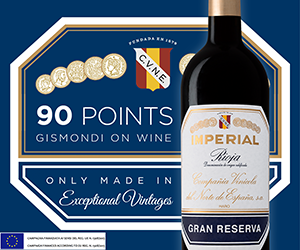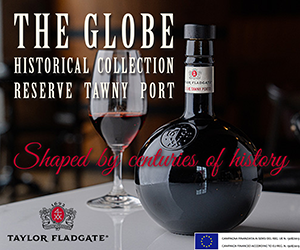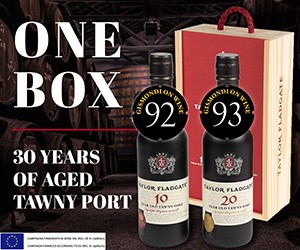Pinot noir is notorious for being a finicky, demanding grape – thin-skinned, sensitive to climate and diseases, and easily thrown off by the slightest misstep in the vineyard or winery.
Yet when handled with care, it becomes quietly stunning. Delicate and elegant, it glides across the palate with the grace of a swan on a still pond. But like the unseen paddling beneath the surface, that grace is only possible through relentless work in the vineyard and precision in the cellar. Its beauty doesn't lie in sheer power or volume – it's in the nuance, the personality, the quiet complexity.
That same complexity was on full display at this year's competition. Pinot noir sparked some of the most passionate debates – particularly over whether it should present a strictly clean profile, free from volatility, brettanomyces, smoke, or any perceived flaws, or whether small traces of these elements can actually add character and complexity. As one of the newer judges, I found myself challenged and inspired. Jamie Goode, renowned for his work in wine science, reminded me that good wine judging isn't about dissecting a wine forensically, but about approaching it holistically. That insight resonated deeply, especially when it comes to pinot noir. In an era when AI can replicate much, the ability to create and assess a wine's complexity, balance, and individuality as a whole remains a distinctly human skill – one that may never be replaced.
At this year's National Wine Awards, pinot noir stood out with 114 medals from 160 entries – a striking 71.25% medal rate. Of the total 1,006 medals awarded, 11.33% went to pinot alone. The variety also claimed 5 Platinum medals, representing 16.13% of all Platinums. As was the case last year, every Platinum for pinot went to wines from the Okanagan. The 16 Gold medals showed a BC-led performance, with 9 from British Columbia, 5 from Ontario, and 1 from Quebec. Silver medals totalled 47 (27 BC, 20 ON), while Bronze saw 46 (25 BC, 21 ON). In total, British Columbia earned 66 pinot medals – 58% of the variety's total – while Ontario collected 46.
BC's strong performance at the top tiers reflects not just investment and focus, but – more importantly – the potential of pinot noir in the province. Pinot is BC's second most productive red variety after merlot, accounting for 11.56% of total tonnage, according to the 2023 BC Wine Council Crop Assessment. Despite the common stereotype – BC producing riper, robust, more fruit-driven styles and Ontario leaning toward lighter, delicate, more restrained expressions – blind tasting showed that it's increasingly difficult to pinpoint a wine's provincial origin. Instead, stylistic choices by winemakers played a bigger role: clonal selection, tannin management, and maturation vessels all contribute to a wine's character. In many cases, the stylistic differences within a single valley were greater than those between provinces.
More than regional variation, vintage proved to be the defining factor. A few top-scoring BC wineries submitted both 2022 and 2023 vintages of the same wine, and judges favoured the 2022s. All five Platinum medals were awarded to wines from the 2022 vintage, which also performed well in the Gold category. According to the BC Wine Council, 2022 brought a cooler, later-than-average growing season with an increased crop, while 2023 was far more challenging. An extreme cold snap in December 2022 reduced yields, followed by a hot growing season and moderate smoke risk from wildfires. Tasting notes reflected these conditions: the 2022s showed delicate, red-fruited, ethereal Burgundian qualities, while the 2023s leaned darker, riper, and more tightly structured. At nearly three years old, the 2022s are now drinking beautifully. But with time, who knows how the 2023s will evolve – and that's the beauty of wine: its ability to surprise and transform.
As noted earlier, all five Platinum medals for pinot noir went to wineries in the Okanagan Valley. The results also highlight a clear trend: wineries that specialize and invest in pinot are consistently rising to the top. The usual standouts – SpearHead and Meyer Family Vineyards – were once again among the top performers. This year, they were joined by Lightning Rock and 1 Mill Road, both steadily building their reputations.
- SpearHead, located in the East Kelowna Slopes and last year's Winery of the Year and Best Performing Small Winery, continues to dominate the pinot category with an impressive haul: 2 Platinums, 1 Gold, 4 Silvers, and 3 Bronzes. It marks the fourth consecutive year they've secured a Platinum, and the third year in a row they've led in the category – an unmatched record.
- Meyer Family, in Okanagan Falls, followed closely with 1 Platinum, 1 Gold, 1 Silver, and 1 Bronze – marking their second straight year as a close runner-up. Their consistent performance underlines the calibre and reliability of their pinot program, which remains among the best in the country.
- Lightning Rock, based in Summerland, earned 1 Platinum and 1 Silver. At the same time, 1 Mill Road, on the Natamata Bench, secured 1 Platinum and 1 Bronze – an impressive showing for relatively new players backed by deep winemaking experience.
- Top-scoring Golds went to Ontario's Black Bank Hill and Henry of Pelham, along with BC's Moraine Winery. Other notable multi-medal winners include CedarCreek, Quails' Gate, Malivoire, Tantalus, and Stag's Hollow – established names continuing to shape the Canadian pinot scene.
Lastly, the average retail price of all medal-winning pinots is $43 (tax included), with Platinum winners averaging $49.44. Gold medalists came in at $46.63, Silver at $44.40, and Bronze at $40.08. While there's a slight increase in price as you move up the medal tiers – and a few outliers exceed $70 – there's still substantial value to be found. Several Gold-winning wines are priced under $30, and six medal-winning bottles are surprisingly under $20. The takeaway: high-quality pinot noir doesn't have to come with a high price tag.
PLATINUM MEDALS
Meyer 2022 Old Block Pinot Noir McLean Creek Road Vineyard BC $47.91
SpearHead 2022 Okanagan Valley Pinot Noir BC $41.40
Lightning Rock Winery 2022 Pinot Noir Canyonview Vineyard BC $40.00
1 Mill Road 2022 Pinot Noir Home Block BC $65
SpearHead 2022 Pommard Clone Pinot Noir BC $52.90
GOLD MEDALS
Black Bank Hill 2022 Pinot Noir ON $45
Henry of Pelham 2023 Speck Family Reserve Pinot Noir ON $50.79
Moraine Winery 2022 Estate Pinot Noir Sophia Vineyard BC $37.00
Red Rooster 2022 Pinot Noir BC $27.50
Malivoire 2023 Moira Pinot Noir ON $48.50
SpearHead 2022 Club Consensus Pinot Noir BC $41.40
CedarCreek 2022 Aspect Collection Pinot Noir BC $92.00
Laughing Stock 2022 Pinot Noir BC $40
Little Engine 2021 Gold Pinot Noir BC $78.20
Quails' Gate Winery 2022 Richard's Block Pinot Noir BC $79.00
Meyer 2022 B Field Blend McLean Creek Road Vineyard BC $31.39
Tantalus Vineyards 2022 Reserve Pinot Noir BC $75
Pelee Island 2023 Pinot Noir ON $16.75
La Cantina Vallée d'Oka 2023 Pinot Noir QC $25.98
Stag's Hollow 2022 Pinot Noir Shuttleworth Creek Vineyard BC $ 40.17
The Organized Crime 2022 Break-In Pinot Noir ON $24.95

 quicksearch
quicksearch






